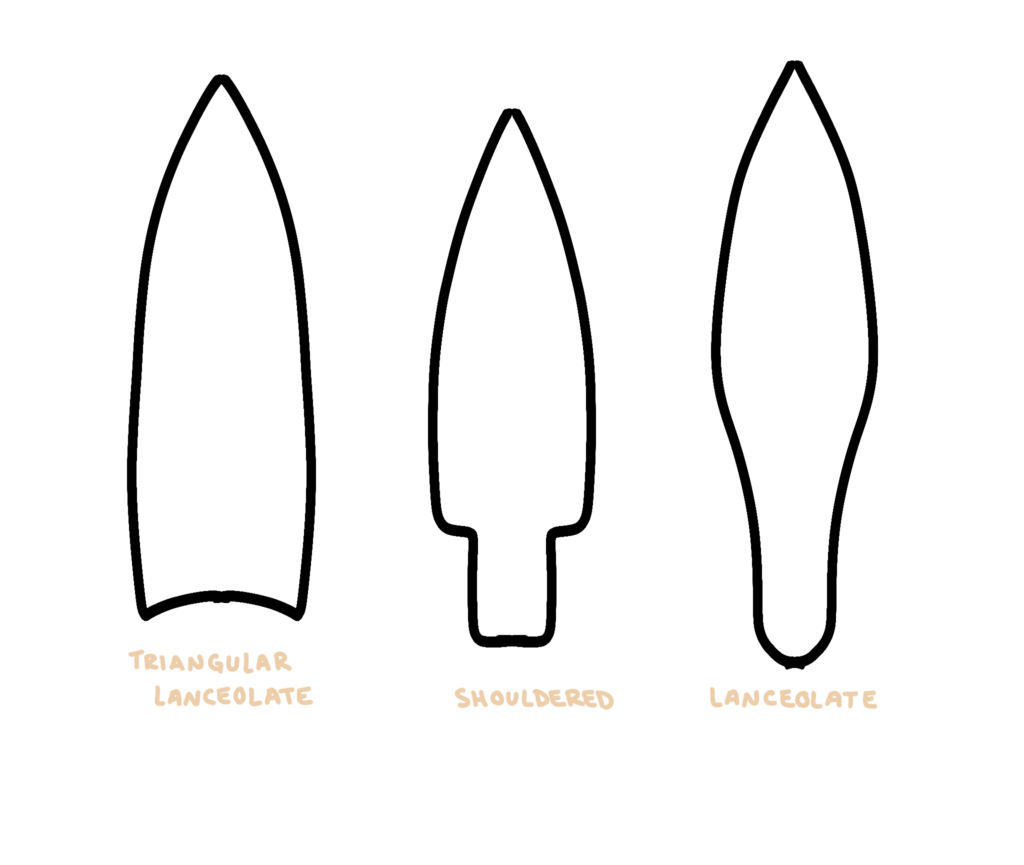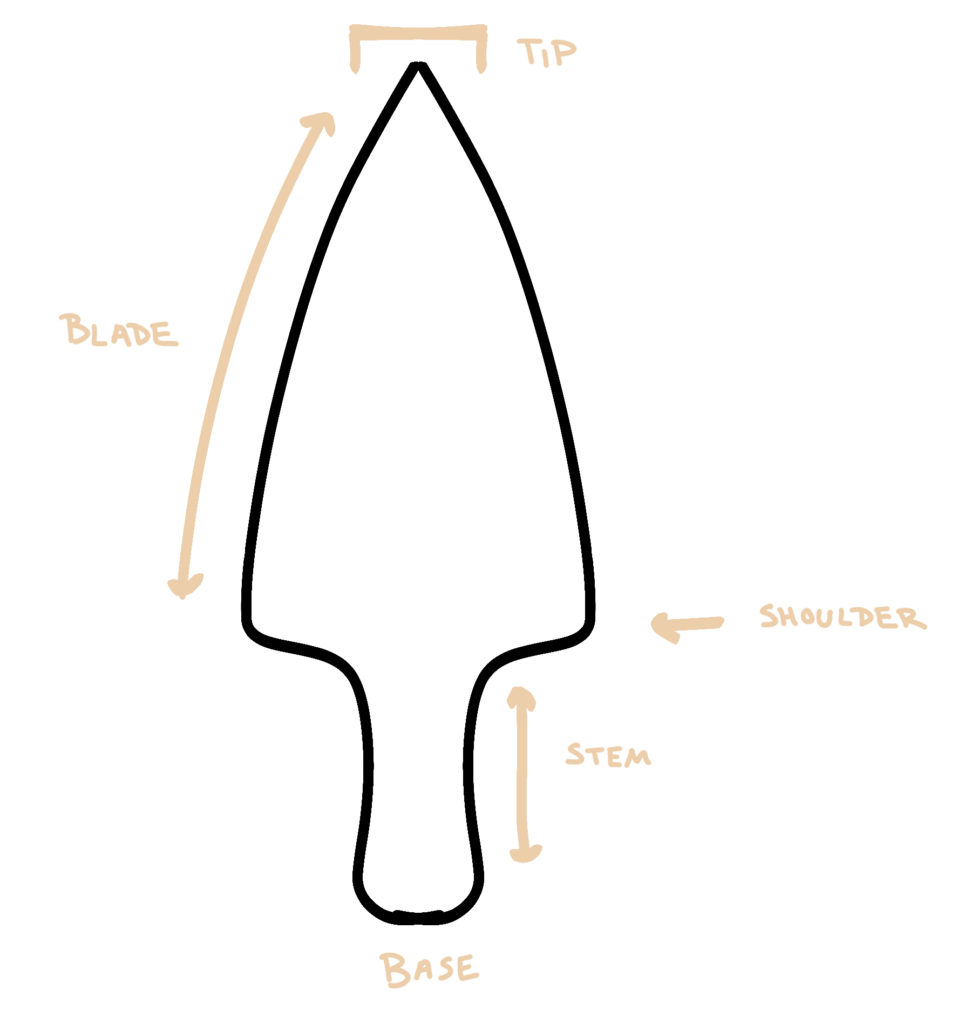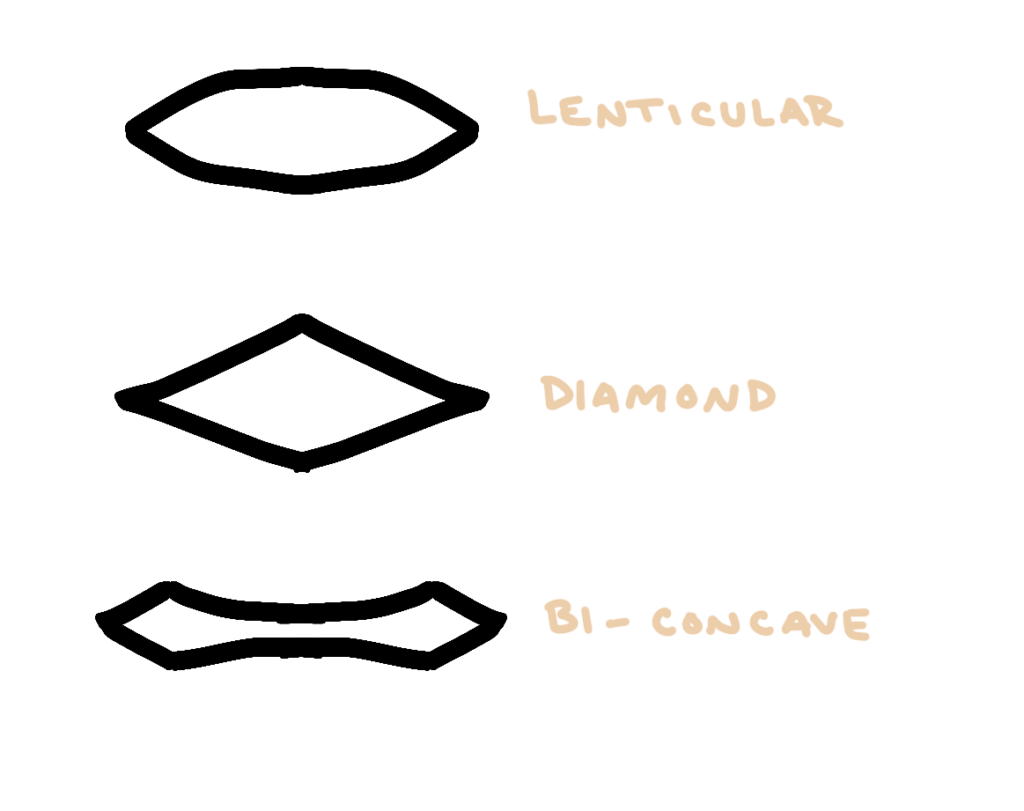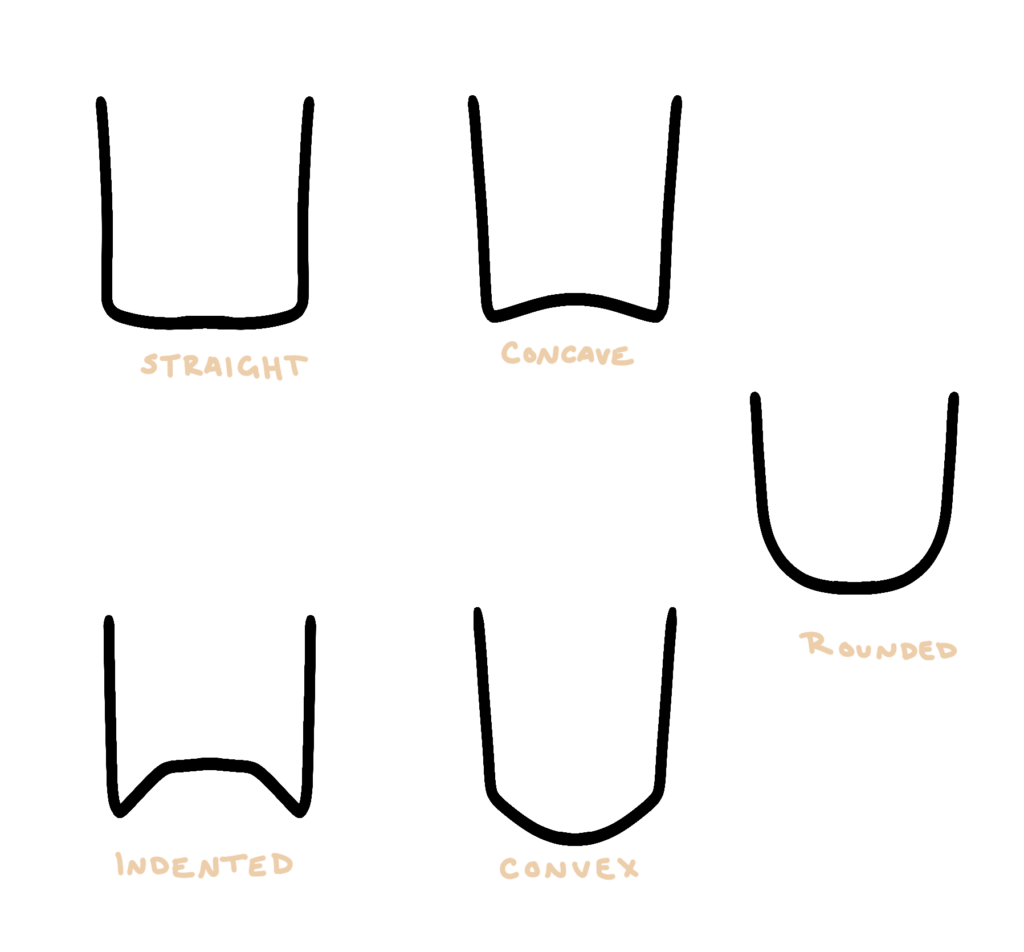Terminology
Trying to understand point morphologies can be a tough thing. There’s a ridiculous amount of ways that you can describe a sharp rock!
I wanted to create this page to help decipher some of the language that can be a barrier to your understanding when reading academic papers and reports.

Point forms
For the purpose of this website, these are the only forms I’ve included. There are more forms, but those styles become predominant after the introduction of the bow and arrow which comes later in history than the point types currently on this website.
All these points were “hafted” which can be thought of the process where they are attached to a handle – or in this case, a wooden spear.
For the triangular lanceolate, which correspond to Folsom and Clovis points, a “V” would have been split into the end of a spear – creating an opening for the point to be placed inside and held together with lashing or glue. This was likely part of the reason the points were fluted.
The important distinctions between these forms are in the stems and bases.
point terminology
Many of these terms are universal across all points.
Each point has a tip, blade, base, and even a stem. Stems might not always be easy to see, like on triangular lanceolates, however we can refer to the area that the point was attached to a spear as the stem. This area is often ground, so you can feel a difference.
One of these terms that is not present across all points is a shoulder. Some points like Alberta have very distinct shoulders, where others like Hell Gap have subtle shoulders that are referred to, but are harder to notice. Points like Folsom lack shoulders entirely.


Horizontal Cross sections
Horizontal cross sections are viewable when you look down on the point from the tip. The differences in these styles results from flaking patterns on the points.
Bi-Concave is often the result of fluted points, where each face is thinned to create wider sections on the sides and a thinner middle.
Diamond cross sections are the result of controlled pressure flakes meeting in the middle of the face to create ridge lines.
Lenticular cross sections are common on lanceolate points and don’t require the same precision that diamond cross sections do. They are flaked across the points face and create a more oval cross section (which still have sharp sides).
Base styles

other terms
This section covers some of the other terms which are referred to by archaeologists
- Biface: This is a multipurpose tool that can be described as a knapped stone that is worked from both sides. This creates a sharp edge that might have been used as a scraper, axe, or knife.
- Core: This is the remains of the stone used to create points. Oftentimes it is a large piece that is flaked into smaller workable stones. The core that remains afterwards is normally in the shape of a ball.
- Cortex: The “crust” of the rock. Often removed completely on finished points to reveal the sharper interior.
- Debitage: Small flakes clustered together as the result of flintknapping activities.
- Deposition: The buildup of soil throughout time.
- Edge Modified Flake / EMF: A flake that was repurposed into a tool by the sharpening of its edge.
- Flint Knapping: This is the process of chipping stones into points or other tools.
- Geofact: This is a stone that looks human modified, but is just the result of natural processes.
- Hafting: The process of attaching a point to a shaft.
- Isolate: An artifact found without any other cultural objects nearby.
- Matrix: A rock that has a mixture of fossils, crystals, and other things within it.
- Patination: The color change of a point due to natural processes and time.
- Preform: An early version of a point, to later be shaped into the final product.
- Pressure Flaking: This is normally the finishing process which adds shape and sharpness to the point. Pressure is applied with the use of an antler to break off pieces with precision.
- Quarry: This is an area with abundant knappable rocks.
- Shaft: The wooden spear that points are attached to.
- Sinew: Strips of hide, tendon, or leather that is used to attach points to a shaft.
